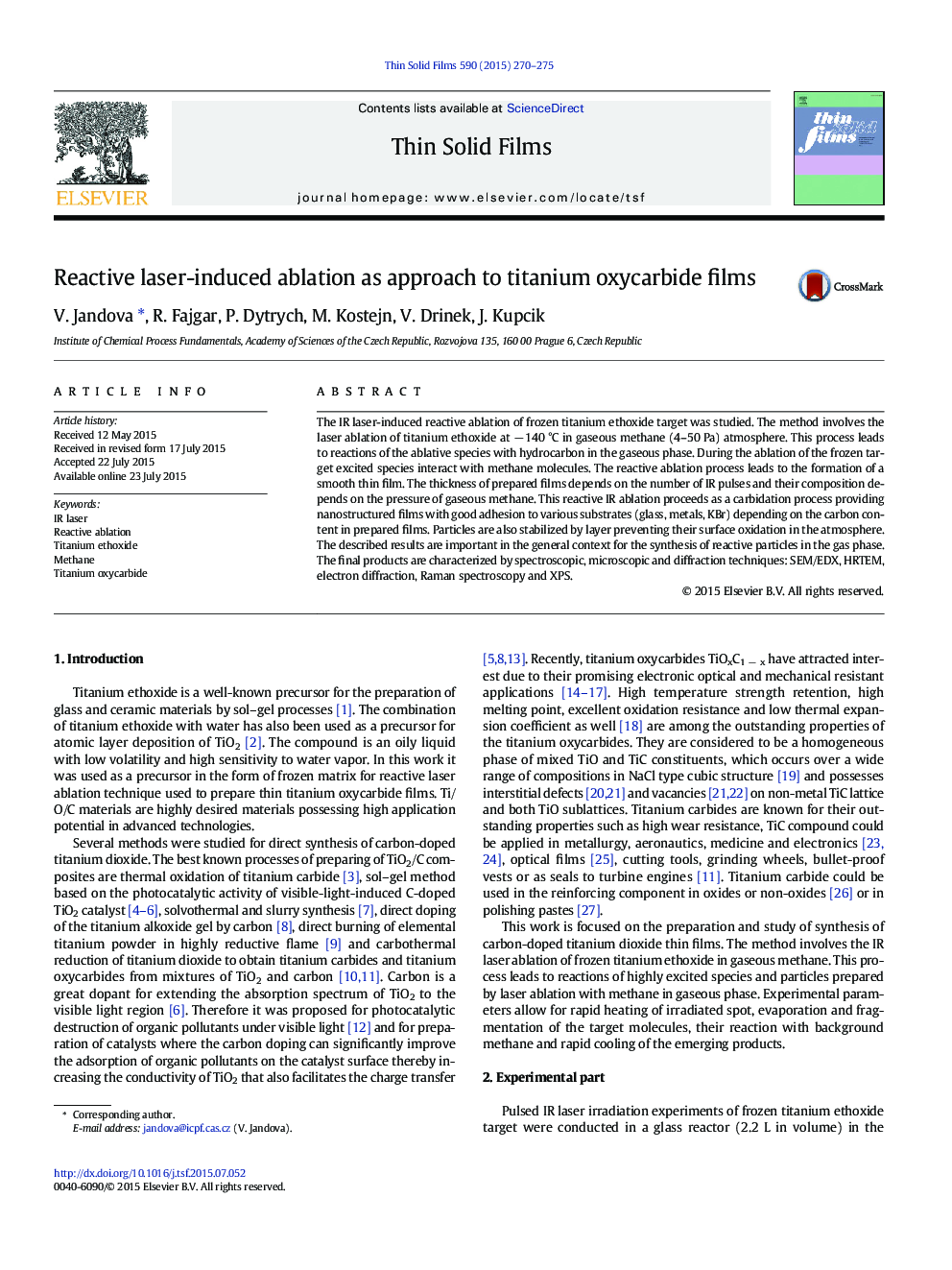| Article ID | Journal | Published Year | Pages | File Type |
|---|---|---|---|---|
| 8033901 | Thin Solid Films | 2015 | 6 Pages |
Abstract
The IR laser-induced reactive ablation of frozen titanium ethoxide target was studied. The method involves the laser ablation of titanium ethoxide at â 140 °C in gaseous methane (4-50 Pa) atmosphere. This process leads to reactions of the ablative species with hydrocarbon in the gaseous phase. During the ablation of the frozen target excited species interact with methane molecules. The reactive ablation process leads to the formation of a smooth thin film. The thickness of prepared films depends on the number of IR pulses and their composition depends on the pressure of gaseous methane. This reactive IR ablation proceeds as a carbidation process providing nanostructured films with good adhesion to various substrates (glass, metals, KBr) depending on the carbon content in prepared films. Particles are also stabilized by layer preventing their surface oxidation in the atmosphere. The described results are important in the general context for the synthesis of reactive particles in the gas phase. The final products are characterized by spectroscopic, microscopic and diffraction techniques: SEM/EDX, HRTEM, electron diffraction, Raman spectroscopy and XPS.
Keywords
Related Topics
Physical Sciences and Engineering
Materials Science
Nanotechnology
Authors
V. Jandova, R. Fajgar, P. Dytrych, M. Kostejn, V. Drinek, J. Kupcik,
